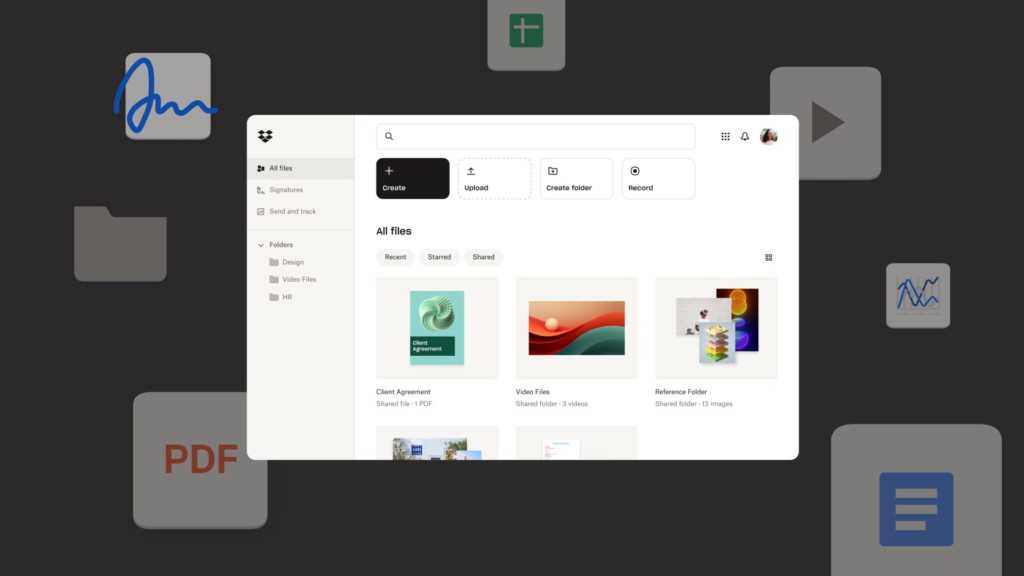Key Takeaways
- Understand Your Audience: Dive deep into your target market’s demographics, psychographics, and behaviors to ensure your startup idea aligns with their needs and desires.
- Iterate and Refine: Embrace feedback and data analysis to continuously refine your product or service, ensuring it evolves to meet market demands and customer expectations.
- Test Market Demand: Utilize pre-launch tests, surveys, and pilot programs to gauge customer interest and validate the viability of your startup idea before investing significant resources.
Embarking on the journey of entrepreneurship is exhilarating yet daunting, particularly when it comes to validating your startup idea.
In the fast-paced world of business, where innovation is revered but risks lurk at every corner, validating your startup idea is not just a crucial step—it’s the compass that guides you towards success amidst uncertainty.
Picture this: you’ve had that lightbulb moment, that spark of brilliance that ignites your entrepreneurial spirit. You’re brimming with excitement, fueled by the prospect of revolutionizing an industry, solving a pressing problem, or fulfilling an unmet need.
However, amidst the euphoria of ideation, lies a fundamental question: Is your startup idea worth pursuing?
This is where validation becomes your guiding beacon. Validation isn’t merely about affirming your brilliance or seeking validation from others—it’s about meticulously scrutinizing your concept, understanding your target market, and ensuring that your solution resonates with real-world needs.
So, why is validation paramount?
Consider it the litmus test for your startup’s viability. It’s the difference between blindly diving into a venture and navigating with precision towards a profitable and sustainable business.
By validating your startup idea, you mitigate risks, refine your strategy, and pave the way for informed decision-making—a blueprint for entrepreneurial success.
But where do you begin? How do you navigate the maze of validation in a landscape teeming with uncertainties and pitfalls?
Fear not, for this comprehensive guide is your roadmap to validation mastery.
Whether you’re a budding entrepreneur brimming with ideas or a seasoned innovator seeking to fine-tune your concept, this step-by-step guide equips you with the tools, strategies, and insights to validate your startup idea effectively.
Throughout this journey, we’ll delve deep into the intricacies of validation, unraveling each step with precision and clarity.
From understanding your target audience and defining the problem to crafting a compelling solution and testing market demand, consider this guide your trusted companion in the pursuit of entrepreneurial excellence.
But this isn’t just another run-of-the-mill guide—this is a culmination of years of entrepreneurial wisdom, distilled into actionable insights tailored for today’s dynamic landscape.
With a blend of timeless principles and cutting-edge strategies, we empower you to navigate the validation process with confidence, armed with the knowledge to transform your startup dream into reality.
So, brace yourself for an enlightening journey—one filled with discovery, innovation, and transformative insights.
Whether you’re on the cusp of launching your startup or contemplating the feasibility of your idea, this guide is your beacon of guidance—a testament to the power of validation in shaping the future of entrepreneurship.
Get ready to embark on a voyage of discovery as we unravel the mysteries of validation, empowering you to chart a course towards entrepreneurial success—one validated idea at a time.
Welcome to the definitive guide on How to Validate Your Startup Idea: A Step-by-Step Guide.
How to Validate Your Startup Idea: A Step-by-Step Guide
- Understanding Your Target Audience
- Defining Problem and Solution
- Creating a Minimum Viable Product (MVP)
- Conducting Surveys and Interviews
- Analyzing Data and Metrics
- Testing Market Demand
- Iterating and Refining
1. Understanding Your Target Audience
In the realm of startup validation, understanding your target audience is akin to laying the foundation of a sturdy edifice.
It’s not merely about identifying demographics; it’s about delving deep into the psyche of your potential customers, unraveling their needs, desires, pain points, and aspirations.
Here, we explore the multifaceted landscape of audience understanding, equipping you with the insights to connect with your target market effectively.
Identifying Your Target Market
- Demographic Segmentation: Start by segmenting your audience based on demographic factors such as age, gender, income level, occupation, and geographic location.
- Example: If you’re developing a fitness app targeting millennials, your demographic segmentation might focus on individuals aged 18-34, predominantly urban dwellers with disposable income.
- Psychographic Profiling: Dive deeper into the psychographic characteristics of your audience, including their values, interests, lifestyle choices, attitudes, and personality traits.
- Example: For a sustainable fashion brand, your psychographic profiling might reveal an audience passionate about environmental conservation, ethical consumption, and minimalist living.

Conducting Market Research
- Competitive Analysis: Analyze your competitors to gain insights into their target audience, market positioning, strengths, weaknesses, and market share.
- Example: If you’re entering the meal kit delivery industry, analyze competitors like Blue Apron and HelloFresh to understand their target audience demographics, pricing strategies, and unique value propositions.
- Market Trends and Insights: Stay abreast of industry trends, consumer behaviors, and emerging market opportunities through market research reports, industry publications, and online databases.
- Example: In the wake of the COVID-19 pandemic, market trends indicate a surge in demand for remote work solutions, health and wellness products, and digital entertainment services.
Analyzing Consumer Behavior
- Online Behavior: Leverage tools like Google Analytics, social media insights, and website heatmaps to analyze user behavior, navigation patterns, and engagement metrics.
- Example: By analyzing website traffic data, you may discover that a significant portion of your audience accesses your site via mobile devices, prompting you to optimize your website for mobile responsiveness.
- Purchase Patterns: Study consumer purchase patterns, including buying frequency, average order value, preferred payment methods, and product preferences.
- Example: E-commerce platforms often use purchase history data to personalize product recommendations and targeted marketing campaigns based on customers’ past purchases.
Creating Buyer Personas
- Persona Development: Develop detailed buyer personas representing your ideal customers, incorporating demographic, psychographic, and behavioral insights.
- Example: A software-as-a-service (SaaS) startup targeting small businesses might create personas such as “Savvy Sally,” a tech-savvy entrepreneur seeking affordable productivity tools, and “Busy Brian,” a time-constrained business owner prioritizing simplicity and efficiency.
- Persona Validation: Validate your buyer personas through surveys, interviews, focus groups, and social listening to ensure they accurately reflect the needs and preferences of your target audience.
- Example: Conducting interviews with small business owners helps validate personas by gathering firsthand insights into their pain points, challenges, and software preferences.
In essence, understanding your target audience is a dynamic and iterative process, requiring continuous refinement and adaptation to evolving market dynamics.
By immersing yourself in the world of your customers, you gain invaluable insights that inform product development, marketing strategies, and customer engagement initiatives, propelling your startup towards success in the competitive landscape of entrepreneurship.
2. Defining Problem and Solution
In the realm of startup validation, defining the problem your startup aims to solve and crafting a compelling solution is the cornerstone of success.
This section delves into the intricacies of problem-solution fit, guiding you through the process of identifying pressing problems, conceptualizing innovative solutions, and aligning them seamlessly to meet market needs.
Identifying the Problem
- Market Research: Conduct thorough market research to identify pain points, challenges, and unmet needs within your target market.
- Example: If you’re exploring opportunities in the healthcare industry, market research might reveal a lack of affordable and accessible mental health services, highlighting the pressing need for innovative solutions in this space.
- Customer Feedback: Gather feedback from potential customers through surveys, interviews, and focus groups to understand their pain points and frustrations.
- Example: A startup in the transportation sector might discover through customer interviews that commuters struggle with unreliable public transportation schedules, leading to frequent delays and inconvenience.

Understanding the Impact
- Quantifying Pain Points: Quantify the impact of the problem by assessing its severity, frequency, and consequences for your target audience.
- Example: For a cybersecurity startup, understanding the potential financial losses and reputational damage resulting from data breaches helps emphasize the urgency of addressing cybersecurity concerns for businesses.
- Market Demand: Evaluate the demand for solutions addressing the identified problem by assessing market size, growth trends, and competitor landscape.
- Example: In the e-learning industry, the rapid adoption of online education platforms amid the COVID-19 pandemic underscores the growing demand for flexible and accessible learning solutions.
Crafting a Compelling Solution
- Innovation and Differentiation: Develop a solution that offers a unique value proposition and stands out from existing alternatives in the market.
- Example: Airbnb revolutionized the hospitality industry by offering a platform for peer-to-peer accommodation rentals, providing travelers with authentic and affordable lodging options beyond traditional hotels.
- User-Centric Design: Prioritize user experience and usability in solution development, ensuring that your product or service addresses users’ pain points effectively.
- Example: Tesla’s electric vehicles are renowned for their sleek design, advanced technology features, and intuitive user interfaces, enhancing the overall driving experience for customers.
Validating Problem-Solution Fit
- Prototype Testing: Create prototypes or minimum viable products (MVPs) to test your solution’s efficacy and gather feedback from early adopters.
- Example: Before launching its flagship product, Apple conducted extensive beta testing and user feedback sessions to refine the iPhone’s design and functionality.
- Iterative Refinement: Iterate on your solution based on feedback, incorporating improvements and enhancements to better align with customer needs and preferences.
- Example: Google continuously updates its search algorithm based on user feedback and data analysis to deliver more relevant and accurate search results to users worldwide.
Defining the problem your startup addresses and crafting a compelling solution is a strategic imperative that underpins the success and sustainability of your venture.
By empathizing with your target audience, innovating with purpose, and validating problem-solution fit iteratively, you pave the way for transformative impact and enduring relevance in the competitive landscape of entrepreneurship.
3. Creating a Minimum Viable Product (MVP)
In the realm of startup validation, the concept of a Minimum Viable Product (MVP) serves as a linchpin for testing hypotheses, gathering feedback, and iterating towards product-market fit.
This section delves into the essence of MVP development, guiding you through the process of creating a streamlined version of your product or service to validate its viability and appeal to your target audience.
Understanding the Concept of MVP
- Definition: Define MVP as the simplest version of your product that allows you to test key assumptions and gather feedback from early adopters.
- Example: Dropbox launched with a basic file storage and sharing feature, allowing users to sync files across devices—a minimal yet functional MVP that validated the demand for cloud-based storage solutions.
- Purpose: Emphasize the purpose of MVP as a tool for validating assumptions, reducing development costs, and accelerating time to market.
- Example: Instagram initially launched as a photo-sharing app with basic filters and social features, validating user interest before expanding its feature set and scaling the platform.

Developing MVP Prototypes
- Identify Core Features: Identify the essential features required to address the primary problem or need of your target audience.
- Example: A food delivery startup might prioritize features such as menu browsing, ordering, and payment processing in its MVP to streamline the ordering process for customers.
- Simplicity and Usability: Prioritize simplicity and usability in MVP design to ensure a seamless user experience and minimize complexity.
- Example: Twitter launched with a minimalist interface focused on 140-character tweets and basic social interactions, emphasizing ease of use and accessibility for users.
Learn why man companies hire top tech developers in Vietnam in our useful guide: How good are the Vietnamese Tech Talents and Software Developers?
Testing MVP with Target Audience
- Early Adopter Feedback: Solicit feedback from early adopters and beta testers to gather insights into usability, functionality, and overall satisfaction with the MVP.
- Example: Airbnb conducted early testing with a small group of hosts and guests to gather feedback on their platform’s booking process, listing features, and payment system.
- Iterative Improvement: Iterate on the MVP based on user feedback, incorporating enhancements and refinements to address pain points and enhance user experience.
- Example: Spotify continuously updates its music streaming platform based on user feedback, adding new features, improving recommendations, and refining its user interface.
Gathering Feedback for Iteration
- Surveys and Interviews: Conduct surveys and interviews with MVP users to gather qualitative feedback on their experiences, preferences, and suggestions for improvement.
- Example: Facebook regularly conducts user surveys and focus groups to gather feedback on new features, interface changes, and overall user satisfaction.
- Data Analysis: Analyze user engagement metrics, such as usage patterns, retention rates, and conversion metrics, to gain quantitative insights into MVP performance.
- Example: Uber analyzes ride booking data to identify usage trends, popular destinations, and areas for service improvement, informing decision-making and product development efforts.
In essence, creating a Minimum Viable Product (MVP) is a strategic imperative for startups seeking to validate hypotheses, mitigate risks, and iterate towards product-market fit.
By embracing simplicity, prioritizing user feedback, and iteratively refining your MVP, you lay the foundation for building a scalable and successful product that resonates with your target audience.
4. Conducting Surveys and Interviews
Surveys and interviews are invaluable tools in the arsenal of startup validation, providing direct insights into the needs, preferences, and pain points of your target audience.
This section explores the art and science of conducting surveys and interviews effectively, guiding you through the process of gathering qualitative and quantitative data to inform your validation efforts.
Designing Survey Questions
- Clarity and Simplicity: Craft clear and concise survey questions to ensure respondents understand the purpose and context of each inquiry.
- Example: Instead of asking, “How satisfied are you with our product?” opt for a more specific question like, “On a scale of 1 to 5, how satisfied are you with the ease of use of our product?”
- Open-Ended Questions: Include open-ended questions to encourage respondents to provide detailed insights and express their opinions freely.
- Example: “What features do you find most valuable in our product, and why?”

Selecting Interview Participants
- Targeted Recruitment: Select interview participants based on predefined criteria to ensure representation from your target audience segments.
- Example: If you’re developing a productivity app for freelancers, target individuals who work in freelance roles across diverse industries.
- Diverse Perspectives: Aim for diversity in interview participants to capture a range of perspectives, experiences, and opinions.
- Example: If you’re designing a health and wellness app, interview individuals with varying fitness goals, dietary preferences, and lifestyle habits.
Gathering Insights and Feedback
- Active Listening: Listen attentively to interviewees’ responses, probing deeper to uncover underlying motivations, frustrations, and unmet needs.
- Example: If an interviewee expresses dissatisfaction with existing solutions, inquire about specific pain points and areas for improvement.
- Note-taking and Recording: Document key insights, quotes, and observations during interviews to capture nuanced feedback and facilitate analysis.
- Example: Use a combination of audio recordings and written notes to capture interview responses accurately and comprehensively.
Analyzing Survey and Interview Data
- Thematic Analysis: Identify recurring themes, patterns, and trends in survey and interview responses to distill key insights and findings.
- Example: Group survey responses and interview transcripts into thematic categories such as usability, features, pricing, and customer support.
- Quantitative Analysis: Convert survey data into quantitative metrics such as satisfaction scores, Likert scales, and Net Promoter Scores (NPS) for quantitative analysis.
- Example: Calculate the average satisfaction rating for each product feature based on survey responses to prioritize feature improvements.
Iterating Based on Feedback
- Feedback Prioritization: Prioritize feedback based on its impact on product usability, customer satisfaction, and alignment with business objectives.
- Example: If multiple interviewees highlight a specific feature request, prioritize its implementation in the product roadmap to address user needs.
- Continuous Improvement: Incorporate feedback into iterative product development cycles, refining features, user experience, and functionality based on user input.
- Example: Google regularly updates its suite of productivity tools based on user feedback, introducing new features, improving performance, and enhancing collaboration capabilities.
Conducting surveys and interviews is an indispensable component of startup validation, providing actionable insights and guiding decision-making throughout the product development lifecycle.
By designing thoughtful surveys, selecting diverse interview participants, and analyzing data rigorously, you gain invaluable insights that inform product iteration, enhance user experience, and drive business growth.
5. Analyzing Data and Metrics
Analyzing data and metrics is a cornerstone of startup validation, providing quantifiable insights into the performance, engagement, and satisfaction of your target audience.
This section delves into the methodologies and best practices for analyzing data and metrics effectively, empowering you to extract actionable insights and make informed decisions to propel your startup forward.
Identifying Key Metrics for Validation
- Engagement Metrics: Track metrics such as user sessions, page views, and time spent on site to gauge user engagement and interaction with your product or service.
- Example: A social media platform may track metrics such as daily active users (DAU), monthly active users (MAU), and user engagement per post to measure platform usage and popularity.
- Conversion Metrics: Monitor conversion metrics such as click-through rates (CTR), conversion rates, and lead generation metrics to assess the effectiveness of your marketing efforts and user acquisition channels.
- Example: An e-commerce website may track conversion metrics such as add-to-cart rate, checkout abandonment rate, and purchase conversion rate to optimize the online shopping experience and increase sales.
Tracking Relevant Data Points
- User Behavior: Analyze user behavior data to understand how users interact with your product or service, including navigation patterns, feature usage, and user journey mapping.
- Example: A mobile app developer may use heatmaps to visualize where users tap, swipe, and scroll within the app to identify areas for interface optimization and feature enhancement.
- Customer Feedback: Aggregate and analyze qualitative feedback from surveys, interviews, and customer support channels to gain insights into user preferences, pain points, and satisfaction levels.
- Example: A software-as-a-service (SaaS) company may analyze customer support tickets and user feedback submissions to identify common issues and areas for product improvement.
Analyzing Data to Assess Validation Success
- Benchmarking: Compare your performance metrics against industry benchmarks, competitor data, or historical trends to assess your startup’s performance relative to peers and market standards.
- Example: A subscription-based streaming service may benchmark its churn rate against industry averages to evaluate customer retention efforts and identify opportunities for improvement.
- Trend Analysis: Identify patterns, trends, and correlations in your data over time to uncover insights into user behavior, market dynamics, and emerging opportunities or challenges.
- Example: A financial services startup may analyze transaction data to identify seasonal spending patterns, consumer preferences, and emerging market trends to inform product development and marketing strategies.
Adjusting Strategies Based on Findings
- Data-Driven Decision Making: Use data and insights to inform strategic decisions, prioritize initiatives, and allocate resources effectively to maximize impact and ROI.
- Example: A marketing team may reallocate ad spend based on performance data, focusing investment on channels that yield the highest return on investment (ROI) and user acquisition metrics.
- Iterative Optimization: Continuously iterate and optimize your strategies, products, and processes based on data-driven insights and experimentation to drive continuous improvement and innovation.
- Example: An e-commerce retailer may conduct A/B testing on website design elements, product pricing, and promotional strategies to identify the most effective strategies for increasing conversion rates and revenue.
In summary, analyzing data and metrics is a vital component of startup validation, providing actionable insights and empirical evidence to guide decision-making, refine strategies, and drive business growth.
By identifying key metrics, tracking relevant data points, and leveraging data-driven insights, you gain a competitive advantage in the dynamic landscape of entrepreneurship, positioning your startup for success and scalability.
6. Testing Market Demand
Testing market demand is a pivotal step in startup validation, providing crucial insights into the receptiveness of your target audience to your product or service offering.
This section explores the methodologies and strategies for testing market demand effectively, empowering you to assess customer interest, validate product-market fit, and refine your go-to-market strategy.
Conducting Pre-Launch Tests
- Pilot Programs: Launch pilot programs or beta tests to offer your product or service to a limited audience, gathering feedback and gauging interest before a full-scale launch.
- Example: Google’s Gmail service initially launched as an invitation-only beta test, allowing early adopters to provide feedback and shape the product’s features and functionality before its public release.
- Soft Launches: Conduct soft launches in select markets or demographic segments to test market response, validate assumptions, and identify areas for improvement.
- Example: Ride-sharing platforms often conduct soft launches in smaller cities or regions to test demand, driver availability, and user adoption rates before expanding to larger markets.
Assessing Interest and Engagement
- Pre-Order Campaigns: Launch pre-order campaigns or waitlists to gauge customer interest and incentivize early adoption by offering exclusive perks or discounts.
- Example: Video game developers often offer pre-order incentives such as bonus content or early access to entice gamers to reserve copies of highly anticipated titles before their release.
- Landing Page Testing: Create landing pages or microsites to showcase your product or service offering, measuring visitor engagement, sign-up conversions, and user feedback.
- Example: Software startups often use landing pages to collect email sign-ups for beta access, allowing them to gauge interest and build a pre-launch customer base.
Gauging Willingness to Pay
- Price Sensitivity Analysis: Conduct price sensitivity surveys or experiments to determine the optimal pricing strategy for your product or service based on customer willingness to pay.
- Example: Subscription-based businesses may offer different pricing tiers or subscription plans to assess customer preferences and price sensitivity before setting final pricing.
- Pricing Tests: Experiment with pricing models, discounts, and promotions to gauge customer response and optimize pricing strategies for maximum revenue generation.
- Example: E-commerce retailers may offer limited-time discounts or bundle deals to test price elasticity and measure the impact on sales volume and customer acquisition costs.
Identifying Potential Early Adopters
- Targeted Marketing Campaigns: Launch targeted marketing campaigns to reach potential early adopters who align with your target audience profile and are likely to embrace new innovations.
- Example: Tech startups often leverage social media advertising and influencer partnerships to target early adopters who are passionate about technology and innovation.
- Community Building: Foster communities or online forums around your product or industry niche to attract early adopters, gather feedback, and cultivate brand advocates.
- Example: Cryptocurrency startups often build online communities on platforms like Reddit and Discord to engage with early adopters, share news and updates, and solicit feedback on new features and developments.
In summary, testing market demand is a critical component of startup validation, enabling you to assess customer interest, validate product-market fit, and refine your go-to-market strategy before committing significant resources to full-scale launch.
By conducting pre-launch tests, assessing interest and engagement, gauging willingness to pay, and identifying potential early adopters, you mitigate risks, optimize resource allocation, and increase the likelihood of success in the competitive landscape of entrepreneurship.
7. Iterating and Refining
Iterating and refining your startup idea is an ongoing process fueled by feedback, data analysis, and a commitment to continuous improvement.
This section delves into the iterative cycle of refinement, guiding you through the steps to iterate on your product, address customer feedback, and optimize your business model for success.
Incorporating Feedback into Product Development
- Feedback Channels: Establish multiple feedback channels, including customer support, surveys, and user testing, to collect actionable insights from your target audience.
- Example: Slack continuously solicits feedback from users through in-app surveys, community forums, and customer support channels to identify pain points and prioritize feature improvements.
- Feature Prioritization: Prioritize feature development based on customer feedback, user demand, and strategic alignment with your product roadmap and business objectives.
- Example: Asana utilizes a public feature request forum where users can suggest and upvote features, helping the product team prioritize development efforts based on user demand.
Conducting A/B Testing and Experiments
- A/B Testing: Experiment with different variations of your product, marketing messages, and user experiences through A/B testing to measure the impact on key metrics.
- Example: Airbnb conducts A/B tests on its website and mobile app to optimize search algorithms, user interface elements, and pricing strategies to improve conversion rates and user engagement.
- Iterative Experimentation: Embrace a culture of experimentation and data-driven decision-making, iterating on hypotheses and testing new ideas to drive continuous improvement.
- Example: Netflix conducts thousands of experiments each year, testing different content recommendations, user interface designs, and personalization algorithms to enhance the user experience and increase subscriber retention.
Refining Business Model and Strategy
- Business Model Canvas: Utilize tools such as the Business Model Canvas to visualize and iterate on your business model, identifying key components such as value proposition, customer segments, and revenue streams.
- Example: Spotify iterated on its business model by transitioning from a pay-per-song download model to a subscription-based streaming service, offering users unlimited access to music for a monthly fee.
- Pivot Opportunities: Remain agile and open to pivoting your business model or strategy based on market feedback, emerging trends, and competitive dynamics.
- Example: Instagram initially launched as a location-based check-in app called Burbn before pivoting to focus on photo-sharing, capitalizing on the popularity of visual content and social networking.
Analyzing Performance and Metrics
- Metrics Tracking: Continuously monitor key performance indicators (KPIs) and metrics to measure the impact of iterations and refinements on product performance and business outcomes.
- Example: Uber tracks metrics such as ride completion rates, driver ratings, and passenger satisfaction scores to identify areas for improvement and optimize the user experience.
- Data Analysis: Leverage data analytics tools and techniques to analyze user behavior, trends, and patterns, extracting actionable insights to inform future iterations and strategic decisions.
- Example: Amazon utilizes data analytics to analyze customer purchase history, browsing behavior, and demographic data to personalize product recommendations, optimize inventory management, and forecast demand.
Implementing Continuous Improvement Processes
- Iterative Development: Embrace an iterative approach to product development, releasing frequent updates and enhancements based on customer feedback and strategic priorities.
- Example: Google continuously updates its search algorithm to improve relevance, accuracy, and user experience based on data analysis, user feedback, and emerging search trends.
- Feedback Loops: Establish feedback loops between product teams, customer support, and marketing departments to facilitate communication, collaboration, and alignment around iterative improvements.
- Example: Tesla gathers feedback from customers, engineers, and sales teams to iterate on its electric vehicle designs, software updates, and service offerings, driving innovation and customer satisfaction.
In essence, iterating and refining your startup idea is a dynamic and iterative process fueled by feedback, experimentation, and a relentless pursuit of excellence.
By incorporating feedback into product development, conducting A/B testing and experiments, refining your business model and strategy, analyzing performance metrics, and implementing continuous improvement processes, you position your startup for sustained success and growth in the competitive landscape of entrepreneurship.
Conclusion
Embarking on the journey of entrepreneurship is an exhilarating endeavor, but it’s also fraught with challenges and uncertainties.
Amidst the excitement of ideation and innovation, the critical question looms: How do you validate your startup idea to ensure its viability and success?
In this comprehensive guide, we’ve dissected the intricate process of startup validation, equipping you with the knowledge, tools, and strategies to navigate this crucial phase with confidence and clarity.
From understanding your target audience and defining the problem-solution fit to creating a Minimum Viable Product (MVP) and testing market demand, each step in the validation process plays a pivotal role in shaping the trajectory of your startup.
By immersing yourself in the world of your customers, empathizing with their needs, and iteratively refining your product or service offering, you lay the groundwork for sustainable growth and competitive advantage in the dynamic landscape of entrepreneurship.
Throughout this guide, we’ve emphasized the importance of data-driven decision-making, customer-centricity, and continuous improvement as guiding principles in the validation journey.
By harnessing the power of feedback, analytics, and iterative experimentation, you can iterate on your startup idea, address customer needs, and optimize your business model for long-term success.
However, validation is not a one-time event—it’s an ongoing process of refinement, adaptation, and learning.
As you progress on your entrepreneurial journey, remember to remain agile, resilient, and open to change. Embrace failure as a learning opportunity, celebrate small wins along the way, and stay laser-focused on delivering value to your customers.
In the ever-evolving landscape of entrepreneurship, the journey towards validating your startup idea is not just about building a product or launching a business—it’s about transforming your vision into reality, making a meaningful impact on the world, and leaving a lasting legacy of innovation and excellence.
So, as you embark on this exhilarating adventure, armed with the insights and strategies gleaned from this guide, remember that validation is not merely a destination—it’s a mindset, a commitment to excellence, and a relentless pursuit of your entrepreneurial dreams.
With perseverance, passion, and a dash of creativity, you have the power to turn your startup idea into a thriving reality that reshapes industries, empowers communities, and leaves an indelible mark on the world.
Here’s to your success in mastering startup validation and building a future brimming with possibility and promise. The world awaits your brilliance, your ingenuity, and your unwavering determination to make a difference.
Go forth and conquer, for the journey of entrepreneurship begins with a single step—but its possibilities are endless.
If your company needs HR, hiring, or corporate services, you can use 9cv9 hiring and recruitment services. Book a consultation slot here, or send over an email to [email protected].
If you find this article useful, why not share it with your hiring manager and C-level suite friends and also leave a nice comment below?
We, at the 9cv9 Research Team, strive to bring the latest and most meaningful data, guides, and statistics to your doorstep.
To get access to top-quality guides, click over to 9cv9 Blog.
People Also Ask
What is startup validation?
Startup validation is the process of testing and confirming the viability of your business idea before investing significant time and resources into its development.
Why is validating my startup idea important?
Validating your startup idea helps mitigate risks, ensures market demand, and increases the likelihood of success by aligning your product or service with customer needs.
How do I identify my target audience?
Identify your target audience by conducting thorough market research, analyzing demographics, psychographics, and behavior patterns to understand who your ideal customers are.
What is a Minimum Viable Product (MVP)?
A Minimum Viable Product (MVP) is the simplest version of your product or service that allows you to test key assumptions and gather feedback from early adopters.
How can I test market demand for my startup idea?
Test market demand through methods like surveys, pilot programs, and pre-launch tests to gauge customer interest, validate assumptions, and assess the potential market size.
What should I do with customer feedback?
Act on customer feedback by incorporating it into product development, refining features, and iterating on your startup idea to better meet customer needs and preferences.
What are some common pitfalls to avoid during startup validation?
Common pitfalls include relying solely on intuition, neglecting market research, ignoring customer feedback, and failing to iterate and refine your startup idea based on insights gained.































![Writing A Good CV [6 Tips To Improve Your CV] 6 Tips To Improve Your CV](https://blog.9cv9.com/wp-content/uploads/2020/06/2020-06-02-2-100x70.png)


